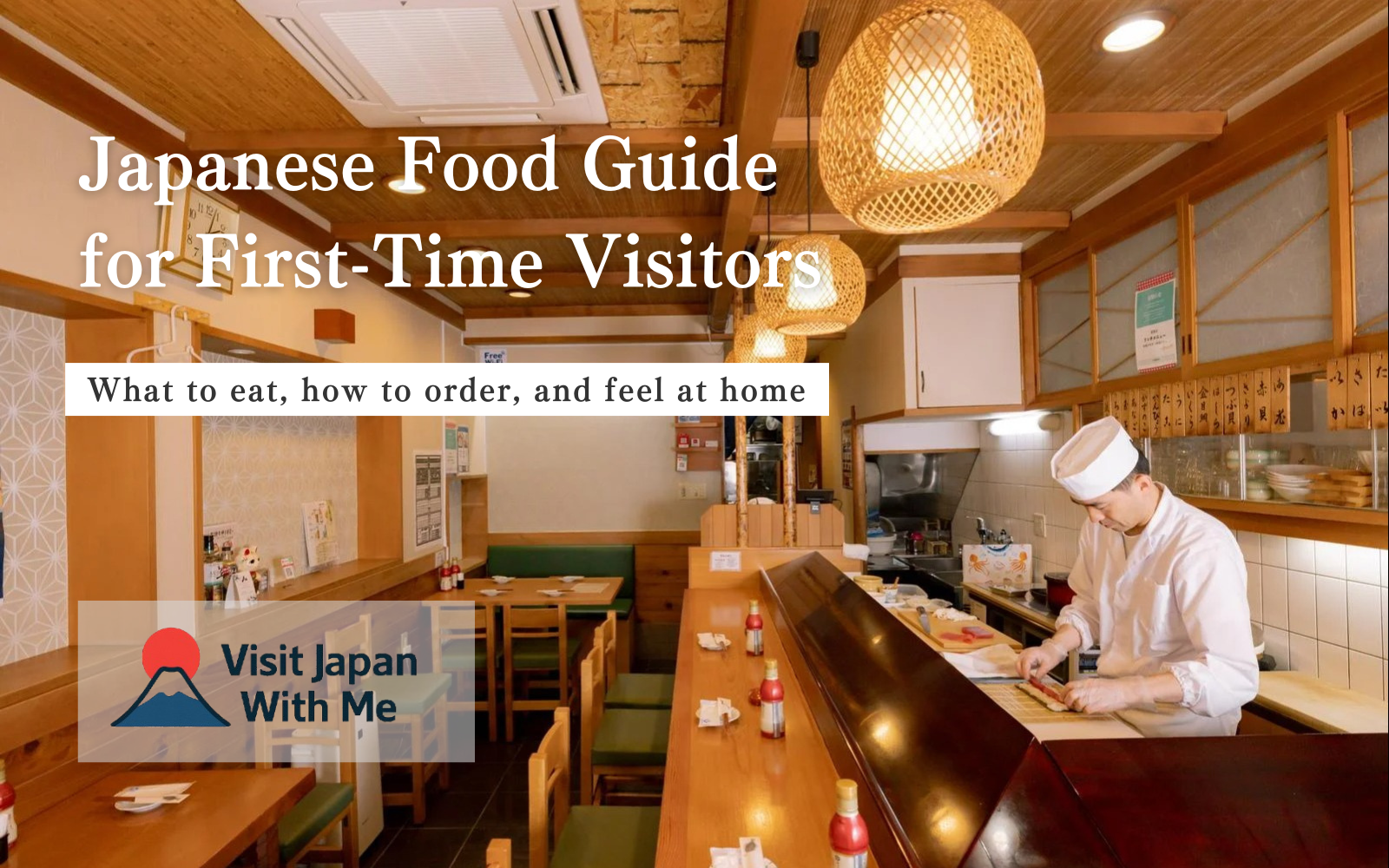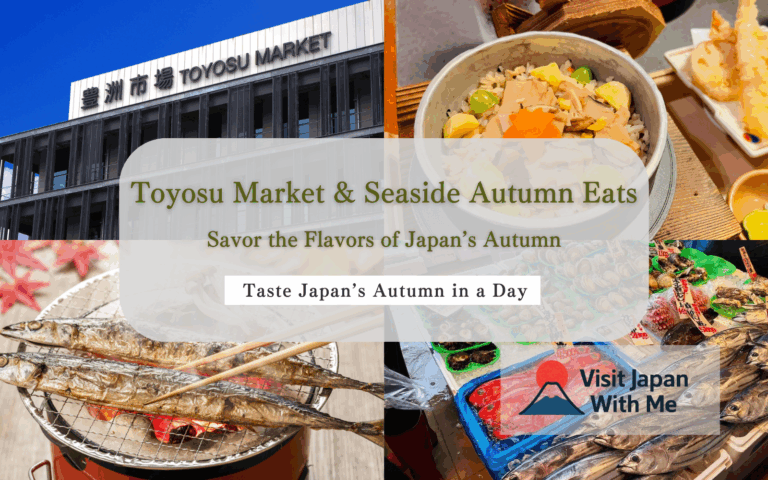Japanese Food Guide for First-Time Visitors
Japan is famous for its delicious food—but if you’re new to the country, dining out can feel a little intimidating. From language barriers to dietary restrictions, this guide will help you enjoy Japanese cuisine with confidence, no matter your needs or preferences.
🗾 More Japan travel tips coming soon!
We’re a local team based in Japan, and we’re adding more helpful tips and real insider info soon.
Don’t miss out—bookmark this site and come back for fresh updates!
🔖 Bookmark NowWhat to Expect: Variety, Seasonality, and Flavor
Japanese food is more than just sushi and ramen. Local restaurants offer a wide variety, from hearty rice bowls to light tofu dishes. Meals often highlight seasonal ingredients and balance umami (savoriness), sweetness, saltiness, and freshness.
Hallmarks of Japanese Cuisine
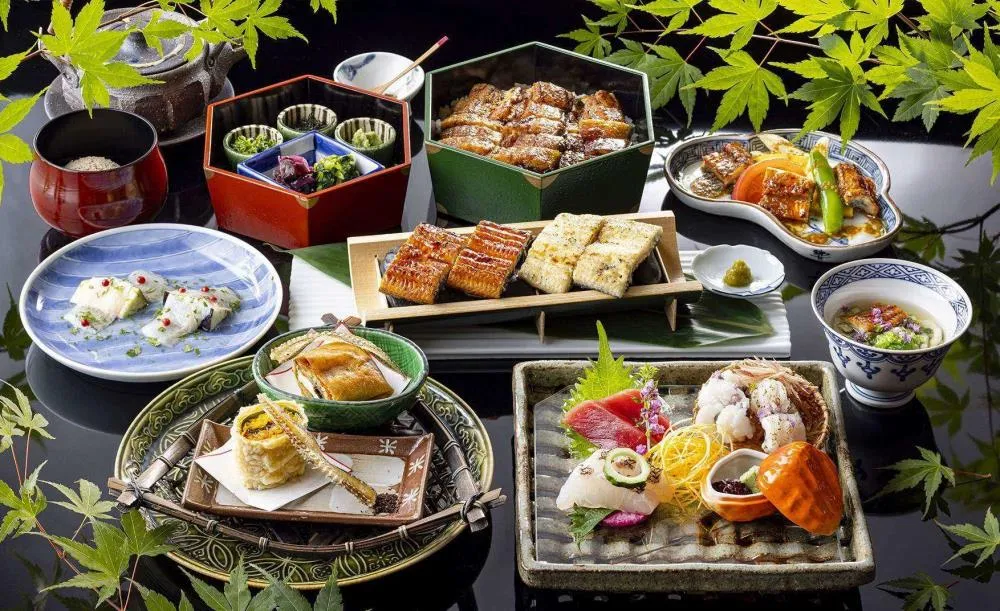
- Seasonal ingredients (shun): Menus often change with the season
- Umami: The deep savory flavor found in dashi (broth), soy sauce, and fermented ingredients
- Presentation: Dishes are arranged beautifully, often on ceramic or lacquerware
- Portion balance: Meals usually include rice, soup, a main dish, and pickles or vegetables
Popular Japanese Dishes
🍣 Sushi
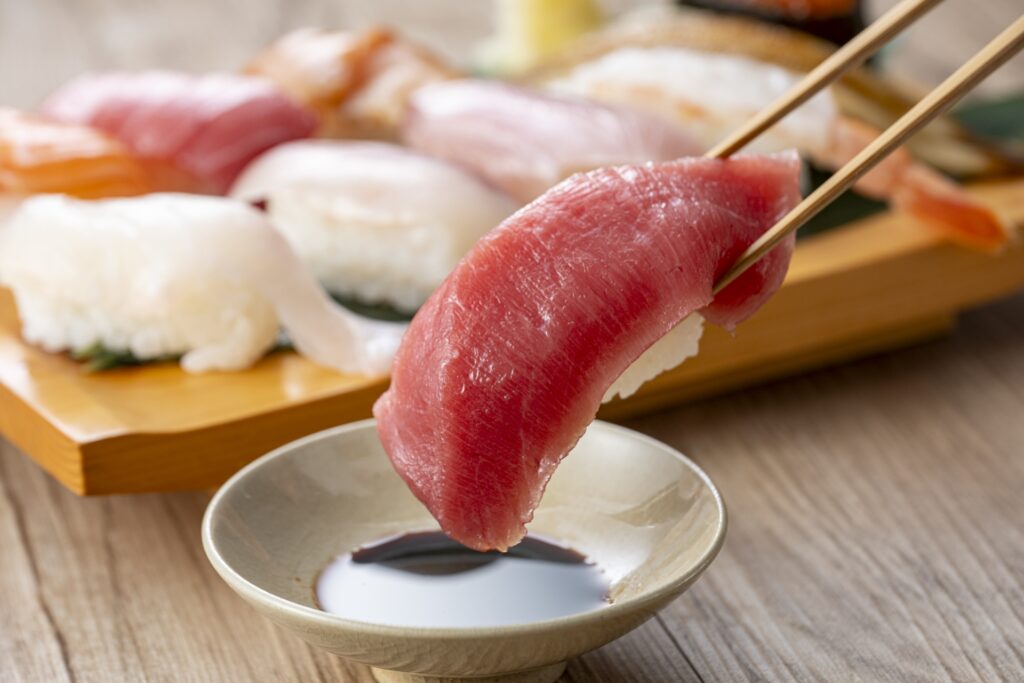
Sushi is one of Japan’s most iconic foods, made with vinegared rice and fresh seafood. While many people think of raw fish, sushi actually comes in a variety of styles and flavors. Here are a few common types:
- Nigiri – a slice of fish placed on top of a small ball of rice
- Maki – rolled sushi wrapped in seaweed (nori), often with fillings like fish or vegetables
- Temaki – hand-rolled cones of seaweed filled with rice and other ingredients
Whether you try it at a high-end sushi bar or a casual conveyor belt restaurant, sushi is a delicious and fun part of Japanese food culture.
Tips for beginners:
- Use soy sauce sparingly—just dip the fish side, not the rice
- Wasabi may already be inside, so taste before adding more
👉 If you don’t like wasabi, you can ask for “wasabi-nuki” (without wasabi) when ordering. - Conveyor belt sushi (kaiten-zushi) is a fun and affordable way to try many types
The real charm of sushi in regional areas lies in local freshness.
While you can enjoy popular choices like tuna and salmon anywhere in Japan, traveling to coastal regions gives you the chance to try sushi made with freshly caught, local fish — often varieties you won’t find in the big cities. Exploring local sushi is a delicious way to connect with the region’s culture and seasons.
🍜 Ramen
Ramen is a noodle soup dish with countless regional varieties. It usually includes wheat noodles, rich broth, sliced pork (chashu), green onions, and a soft-boiled egg. Popular broth types;
- Shoyu (soy sauce) – light and salty
- Miso – hearty and savory
The deep umami flavor of miso ramen comes from fermented soybean paste, combining rich broth, garlic, and toppings like corn and butter — especially popular in Hokkaido. - Tonkotsu (pork bone) – creamy and rich
Made by boiling pork bones for hours, tonkotsu broth has a thick, creamy texture and a distinct aroma that some find strong — but it’s incredibly flavorful. This style is especially popular in Fukuoka and across Kyushu, and is the base for Ichiran, one of Japan’s most famous ramen chains known worldwide. - Shio (salt) – clear and delicate
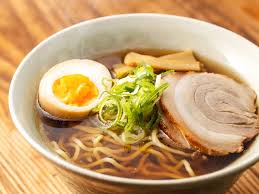


How to eat: Slurping is okay! It shows you’re enjoying it and helps cool the noodles.
Japan’s Regional Ramen: A Delicious Reason to Explore
Japan is home to countless regional ramen styles, each shaped by local ingredients, climate, and history. From snowy Hokkaido to sunny Kyushu, almost every prefecture has its own signature bowl. Trying local ramen can be a fun and tasty part of your journey — some travelers even plan entire trips around it!
Here are three of the most famous:
- Sapporo Ramen (Hokkaido) – Known for its rich miso-based broth, thick noodles, and toppings like corn and butter. Perfect for cold winters.
- Kitakata Ramen (Fukushima) – Features a light shoyu (soy sauce) broth with flat, curly noodles and generous slices of pork (chashu).
- Hakata Ramen (Fukuoka) – The iconic tonkotsu (pork bone) style, with ultra-thin noodles and a creamy, savory broth. Ichiran is based on this type.
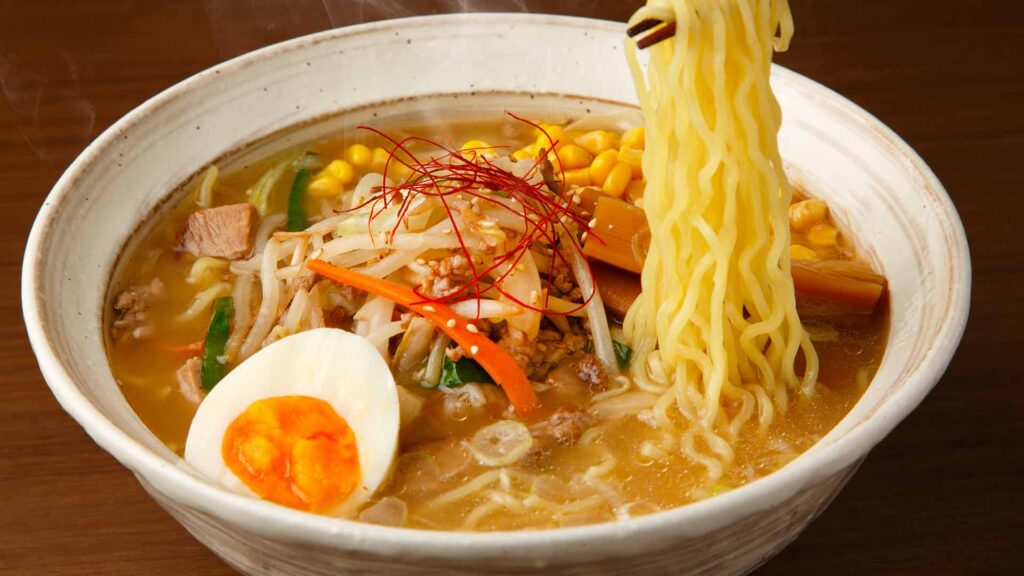
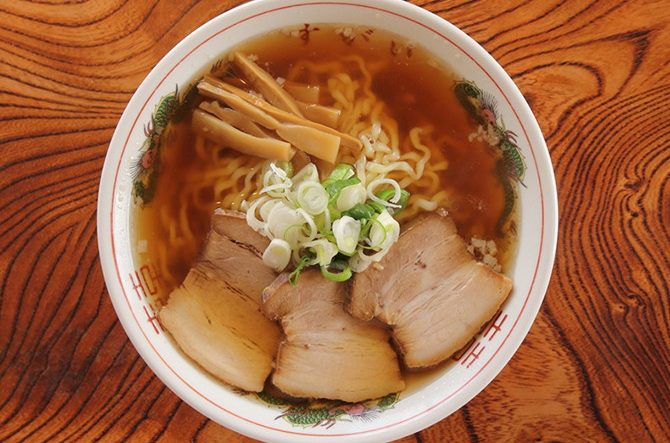

If you’re visiting a new region in Japan, look up their local ramen — it might become one of your favorite travel memories!
🍤 Tempura
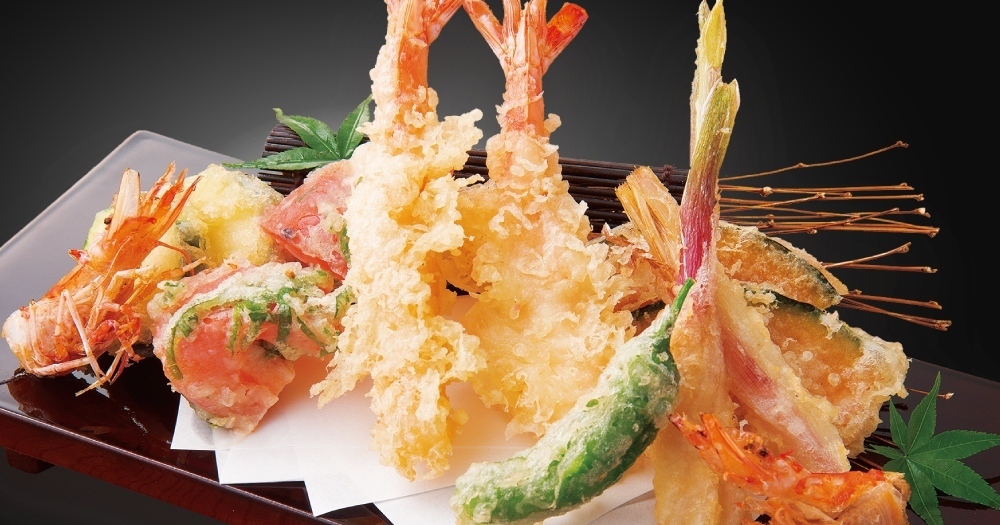
Tempura is a beloved Japanese dish where seafood and vegetables are lightly coated in batter and deep-fried to golden perfection. Unlike heavy fried foods, tempura is known for its light, crisp texture and delicate flavor that lets the freshness of the ingredients shine through.
Common ingredients include shrimp, sweet potato, eggplant, mushroom, and pumpkin — each offering its own texture and taste.
Tempura is typically served as part of a set meal with rice and miso soup, placed on top of noodles like soba or udon, or accompanied by a dipping sauce called tentsuyu and grated daikon radish for a refreshing balance.
Tempura is not just tasty — it’s also beautifully presented, often arranged with care to reflect the seasons. It’s a great way to enjoy Japanese aesthetics and flavor in one bite.
🐖 Tonkatsu
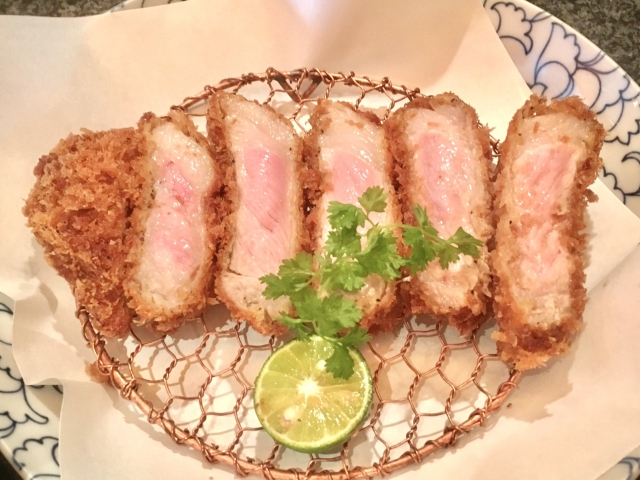
Tonkatsu is a crispy, golden pork cutlet that’s breaded with panko and deep-fried to perfection. It’s juicy on the inside, crunchy on the outside — a comforting and satisfying dish loved across Japan.
It’s typically served with shredded cabbage, steamed rice, and miso soup.
Types of cut:
- Rosu-katsu: A fattier loin cut with more richness and flavor
- Hire-katsu: A leaner fillet, tender and less oily
Sauce & flavor:
Tonkatsu is paired with a thick, sweet-savory sauce that’s either drizzled on top or served for dipping. Many restaurants offer freshly ground sesame seeds you can mix with the sauce — a fun and aromatic touch that enhances the experience.
Whether in a specialty tonkatsu shop or a casual diner, this dish is a must-try for lovers of crispy comfort food.
🍚 Donburi (Rice Bowls)
Donburi is a simple, satisfying Japanese meal: a generous bowl of steamed rice topped with flavorful ingredients. It’s warm, hearty, and often combines protein, vegetables, and carbs in one easy-to-enjoy dish.
Popular varieties:
- Gyudon: thin-sliced beef and onion simmered in sweet soy sauce
- Oyakodon: chicken and egg cooked together over rice
- Kaisendon: a colorful mix of fresh raw seafood (like sashimi)
- Tendon: crispy tempura on rice, often with a light soy-based sauce

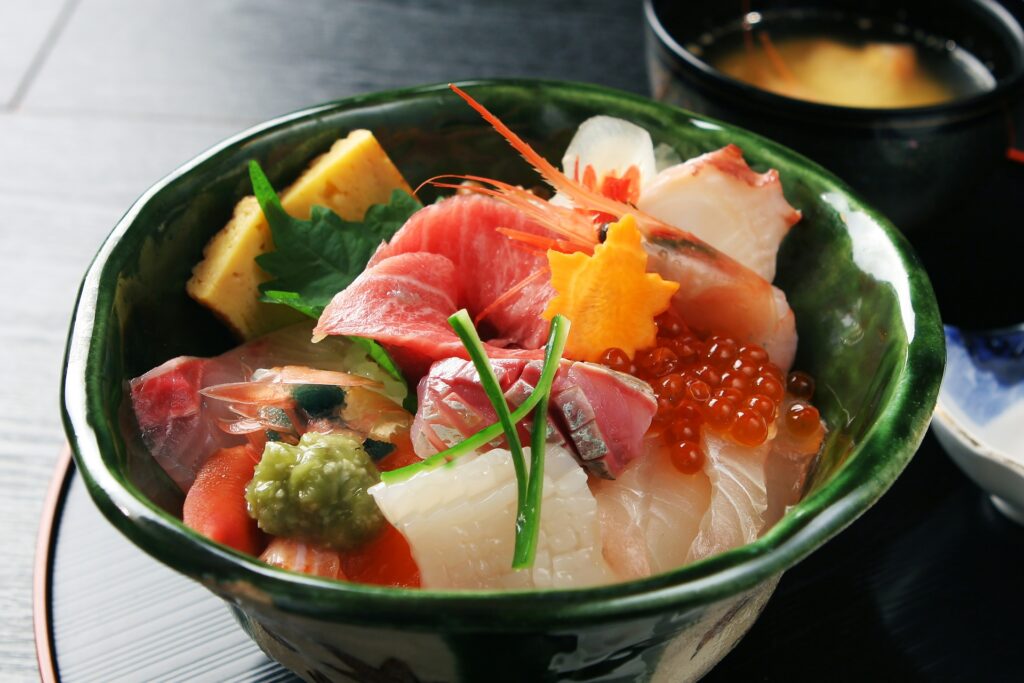
Donburi is loved for its:
- ✅ Quick and convenient preparation
- ✅ Balanced combination of rice, protein, and flavor
- ✅ Wide regional variety — many areas use local specialties as toppings
It’s an excellent choice for lunch or a casual dinner, whether you grab it at a chain shop, a market, or a small local restaurant. You might even find unique versions depending on where you are — like eel (unadon) near rivers, or sea urchin (uni don) by the coast.
Donburi is quick, filling, and usually affordable—great for lunch on the go.
🧂 Key Japanese Seasonings
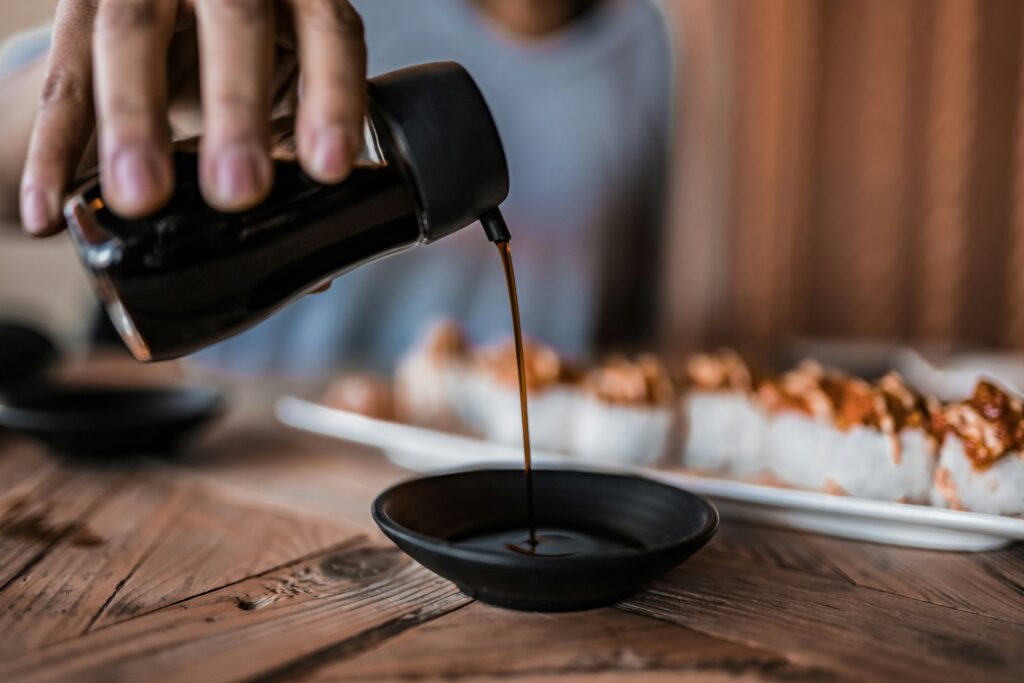
Soy sauce (shoyu)
Salty and rich in umami. Used for dipping sushi, in soups, and in marinades. First-time visitors might find it stronger or saltier than expected, so try small amounts first.
Miso
A fermented soybean paste with a salty, slightly sweet flavor. Common in soups and sauces. Some types (especially red miso) can be quite strong in taste.
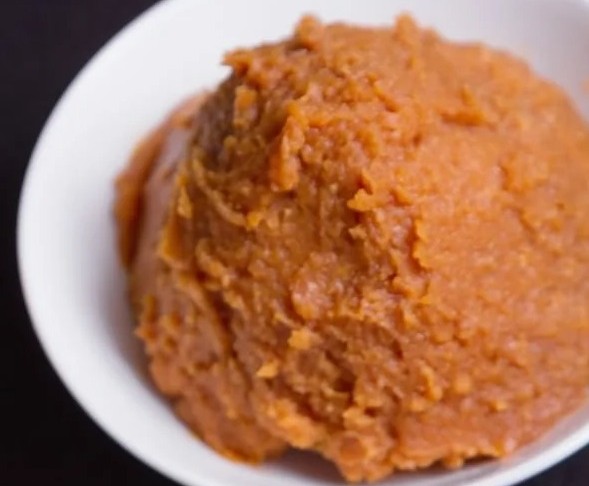
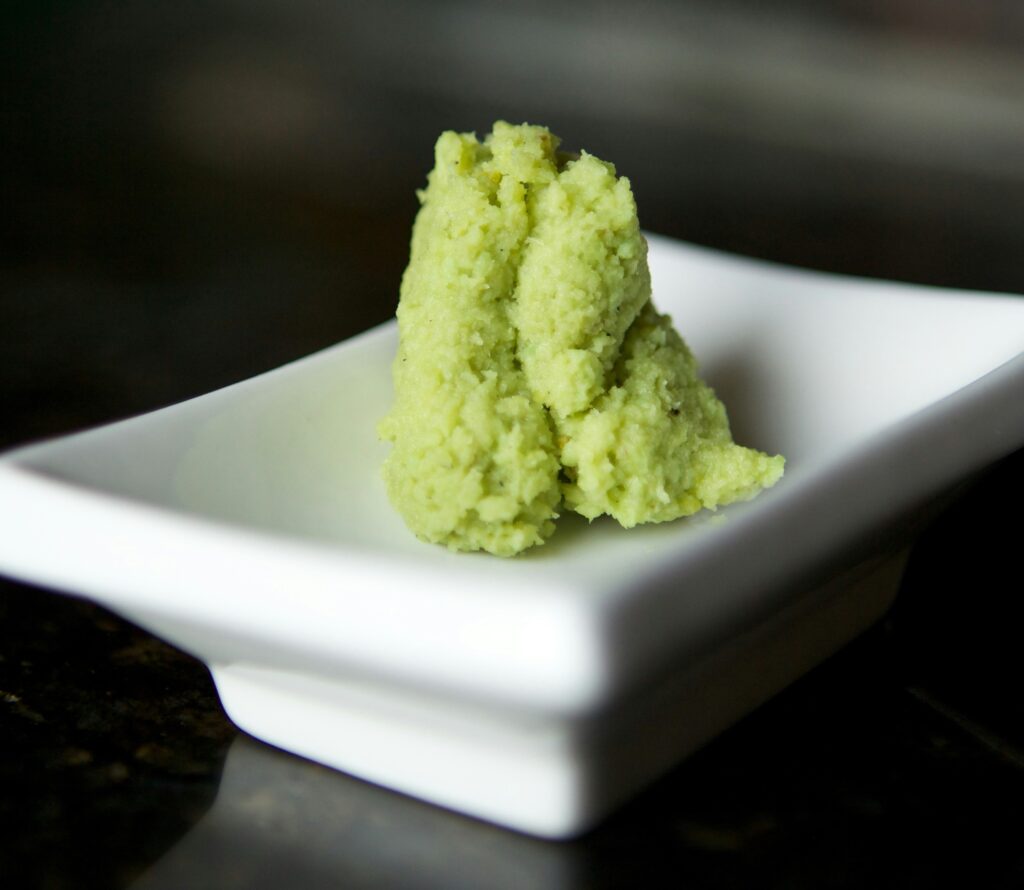
Wasabi
A sharp, pungent green paste often served with sushi. Real wasabi is milder and more aromatic, but many restaurants use a horseradish-based substitute that can be quite spicy—use sparingly at first.
Karashi(Japanese Mustard)
Karashi is a spicy Japanese mustard—hotter and sharper than Western mustard, with no sweetness. Often served with tonkatsu or oden, but use carefully—it can really sting your nose!
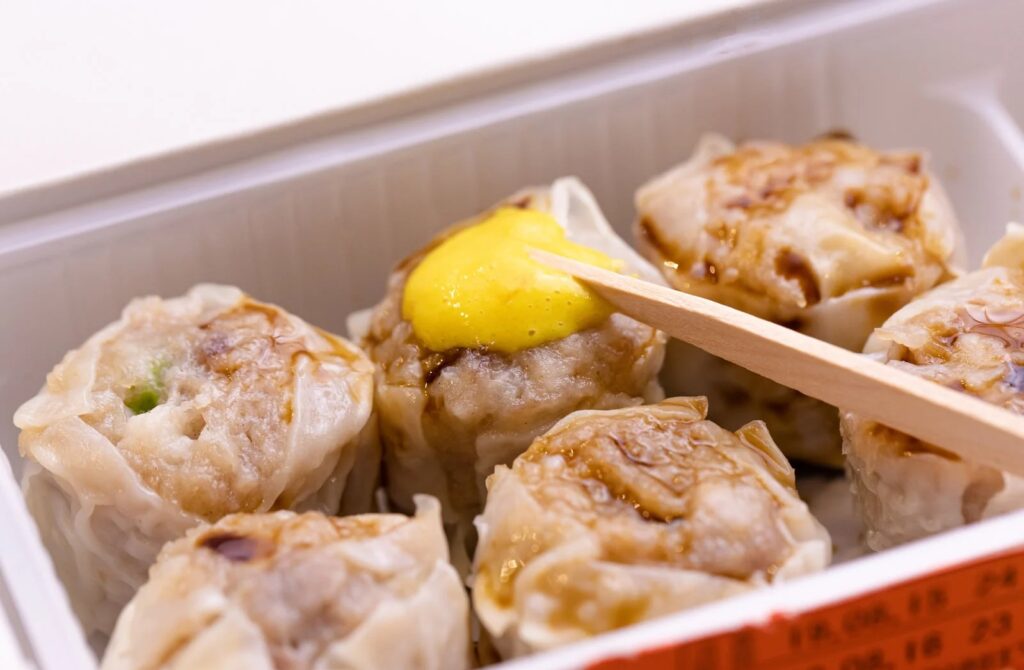
Hotel vs. Ryokan Meals: What to Expect
Hotel Breakfasts
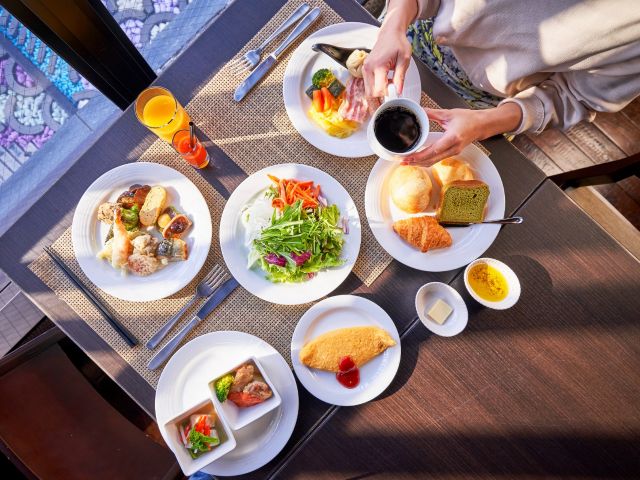
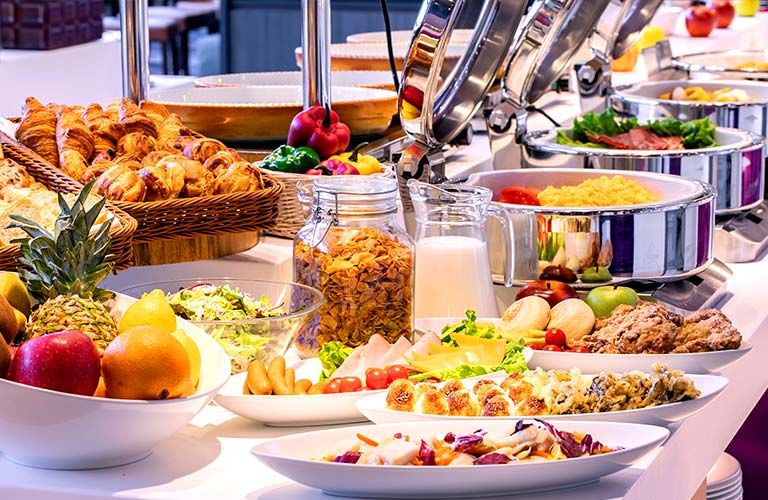
Most Western-style hotels in Japan — including international chains and local business hotels — offer buffet breakfasts that combine Japanese and Western dishes. Whether you’re in Tokyo or Kyoto, you’ll likely find:
- Scrambled eggs, toast, bacon, sausage
- Rice, miso soup, grilled fish
- Salad, fruit, yogurt
- Coffee, tea, juice
Buffets are common across all hotel categories, and they’re great if you want to pick and choose based on your mood or dietary needs.
Ryokan Breakfasts (Traditional Inns)
Meals at ryokan are often a highlight of the stay — especially dinner — but breakfast can be equally memorable.
In large or modern ryokan, you’ll often find a breakfast buffet similar to hotels, offering both Western and Japanese items. However, if you stay at a small, traditional-style ryokan (often family-run), breakfast is usually served at your table and features a beautifully arranged Japanese meal — think grilled fish, rice, miso soup, tamagoyaki (Japanese omelet), pickles, and seaweed.
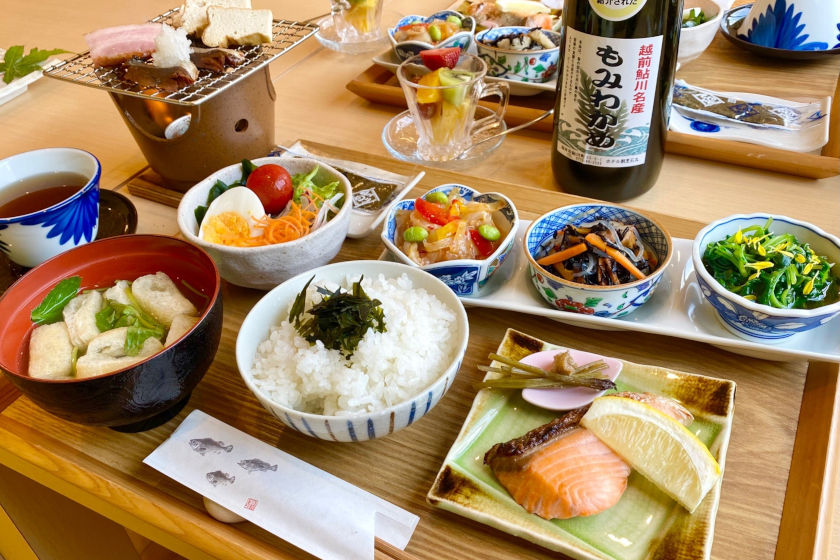
Tip: If you’re curious about traditional Japanese food culture, staying at a small ryokan is one of the best ways to experience it firsthand — even in the morning.
Ryokan Dinners: A Highlight of the Stay
Unlike most hotels, ryokan stays often include dinner as part of the package. This is one of the biggest differences — and for many travelers, one of the best reasons to stay at a ryokan.
Large ryokan usually offer buffet-style dinners in spacious dining halls. These buffets are not just casual meals — they often feature high-quality ingredients such as wagyu beef, fresh sashimi, crab, and seasonal delicacies. It’s a chance to try a wide variety of Japanese foods in one sitting.
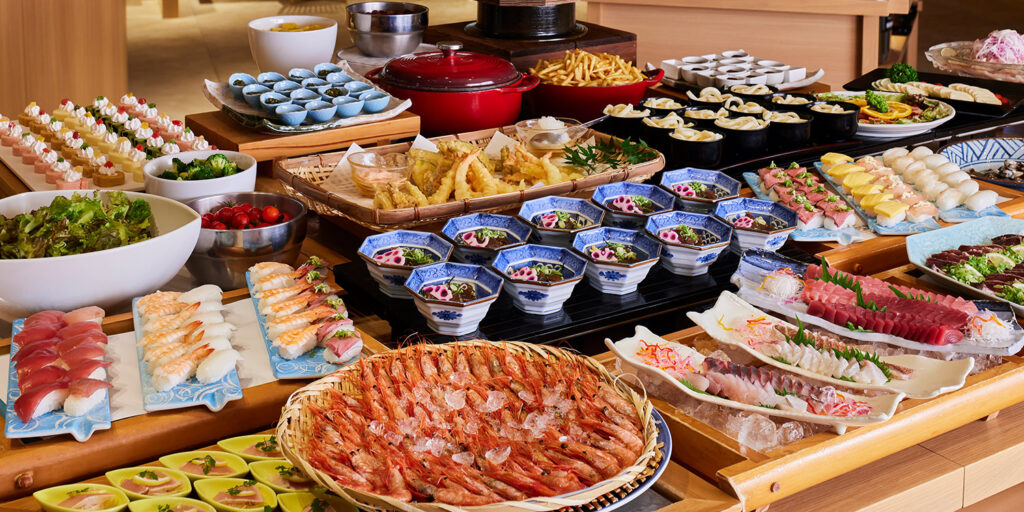
Small, traditional ryokan usually serve dinner in your room or in a private dining area. These meals are typically beautifully arranged multi-course Japanese dinners (kaiseki), made with local and seasonal ingredients. You’ll find dishes like grilled river fish, mountain vegetables, or specialty items from the region.
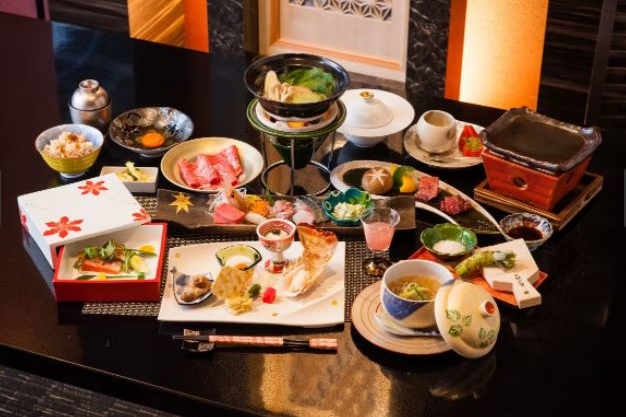
Many Japanese travelers choose a ryokan specifically for its food — the meal itself becomes part of the destination. If you enjoy trying authentic, seasonal dishes in a calm setting, a ryokan dinner can be a very special experience.
🔗 Want to learn more about the differences between small and large ryokan?
Check out our full guide on where to stay in Japan.

Not sure where to stay in Japan?
From traditional ryokan and cozy guesthouses to business hotels and capsule pods, this local guide walks you through each type of accommodation — with honest tips on comfort, budget, and cultural experience. Perfect for first-timers and curious travelers alike.
Is There an English Menu?
Yes, more often than you think!

In major cities and tourist-friendly areas (Tokyo, Kyoto, Osaka), many restaurants have English menus or picture menus. You can also:
- Look for ticket machine restaurants with photos (see below)
- Ask: “Eigo no menyuu wa arimasu ka?” (Do you have an English menu?)
- Use apps like Google Translate with your camera to read Japanese menus
How to Use a Meal Ticket Machine (Shokkenki)
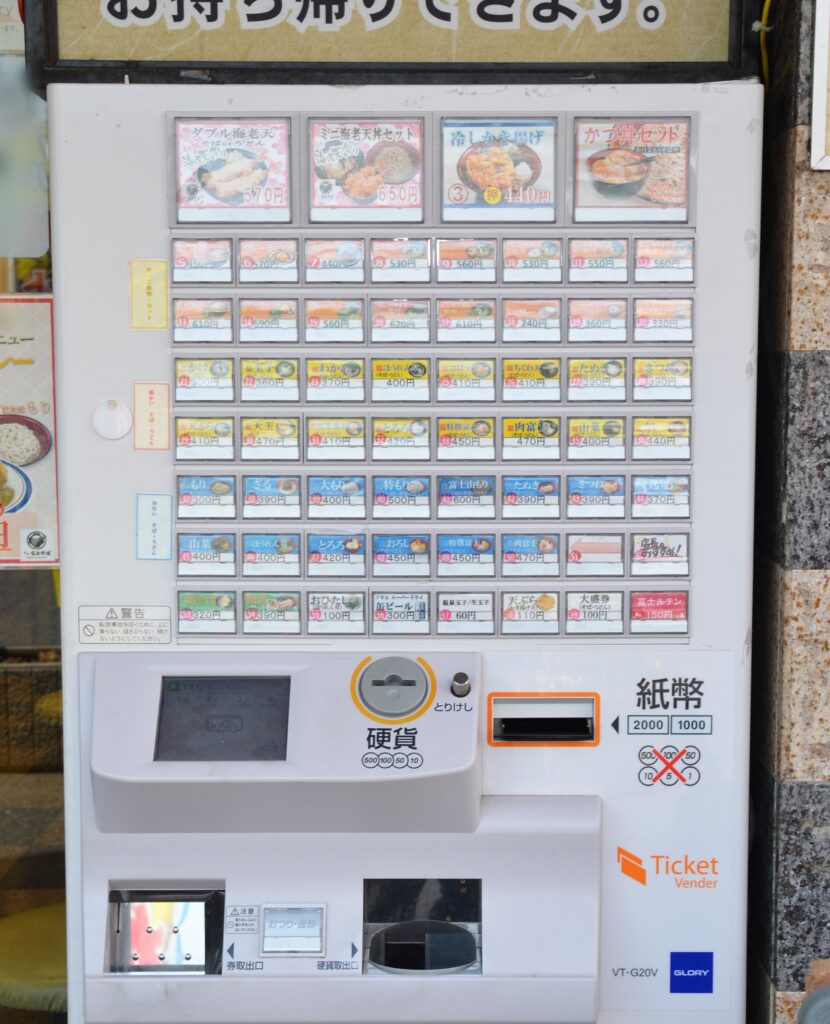
Common at ramen shops and casual eateries, these machines are simple once you know how:
- Insert cash (some accept IC cards)
- Press the button for your meal (with or without pictures)
- Take the printed ticket and give it to the staff
Tips for beginners:
- Cash only, usually
Most machines don’t accept credit cards. Be sure to have coins or ¥1,000 bills ready. - Menus may be in Japanese only
Look for buttons with pictures. If you’re unsure, just point and say, “This one, please.” Staff are used to helping tourists. - Watch for similar buttons
One dish may have multiple buttons—for sizes, toppings, or sets. Double-check before pressing. - Buy your ticket before sitting down
After paying, you’ll get a paper ticket. Hand it to the staff (sometimes at the counter, sometimes at your table). - Be mindful of others waiting
If there’s a line behind you, decide quickly—or step aside and check the menu first.
If you’re unsure, observe others or politely ask staff for help—many are used to helping tourists.
🌱 Vegetarian, Vegan in Japan
Traditional Japanese cuisine includes many plant-based items (e.g., tofu, seaweed, rice), but many dishes include fish stock (dashi).
Look for “shojin ryori” (Buddhist temple cuisine)
Shojin ryori is traditional Buddhist temple cuisine in Japan, entirely plant-based and rooted in the principles of non-violence and mindfulness. It avoids all meat, fish, and animal products—including eggs and dairy—and often excludes pungent ingredients like garlic and onion, which are believed to disturb mental clarity.
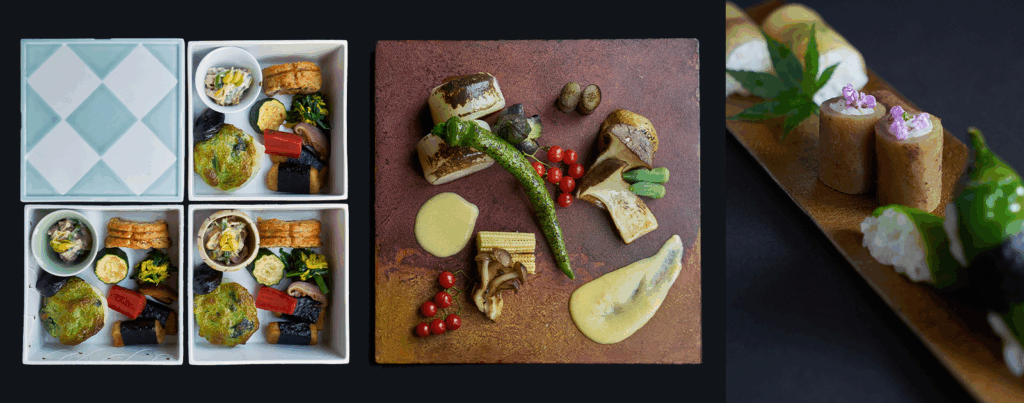
Typical dishes include:
- Tofu and yuba (tofu skin)
- Seasonal vegetables prepared simply
- Pickles and rice
- Miso soup made with kombu (kelp) broth instead of fish
Originally developed by Zen monks, shojin ryori is not only vegetarian, but also beautifully balanced and artfully presented—meant to nourish both the body and spirit.
In Tokyo, shojin ryori is offered at a few temples and specialized restaurants.
Note that advance reservations are usually required.
Use the HappyCow app to find vegetarian-friendly restaurants
HappyCow is available in Japan, but there are a few things to keep in mind.
1. Big cities only
HappyCow works well in places like Tokyo, Kyoto, and Osaka. In smaller towns, listings may be limited or outdated.
2. “Vegetarian-friendly” ≠ 100% vegetarian
Some restaurants marked as “vegetarian-friendly” still use meat broth (dashi), bonito flakes, or eggs. Always double-check ingredients or ask:
👉 “Niku, sakana, dashi wa haitte imasu ka?” (Does this contain meat, fish, or fish broth?)
3. Opening hours may vary
Many small restaurants close mid-afternoon or take irregular holidays. Double-check the hours on Google Maps or the shop’s website before visiting.
4. Reservations are sometimes needed
For temple cuisine (shojin ryori) or vegan set menus, especially in Kyoto, it’s best to call or book online in advance.
5. Language barrier
Not all staff speak English—even if the place is listed on HappyCow. Having photos or key phrases ready can help.
🏪 Convenience Stores: A Surprisingly Great Option
Japan’s convenience stores—called konbini—like 7-Eleven, Lawson, and FamilyMart are clean, well-stocked, and open 24/7. You’ll find them on almost every street corner in cities, and they’re a lifesaver for travelers. Japanese convenience stores offer affordable and freshly made meals, with some products labeled in English. You’ll find a wide variety of bento, onigiri (rice balls), sandwiches, and salads perfect for a quick bite.
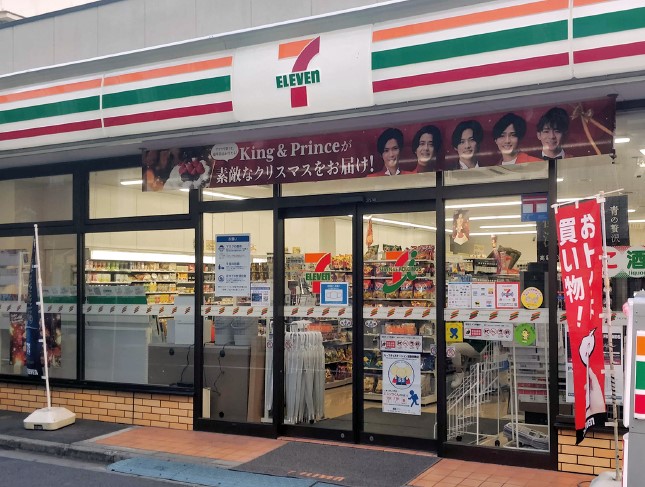


🍱 What Is “Konbini Food”?
Konbini meshi (convenience store food) is cheap, quick, and surprisingly tasty. Popular items include:
- Onigiri (rice balls) with tuna mayo, salmon, or pickled plum
- Sandwiches like egg salad, ham and cheese, or fruit and cream
- Instant noodles, sandwiches, or spaghetti
- Hot snacks like fried chicken (karaage) or oden in winter
- Desserts such as mochi, pudding, or matcha sweets
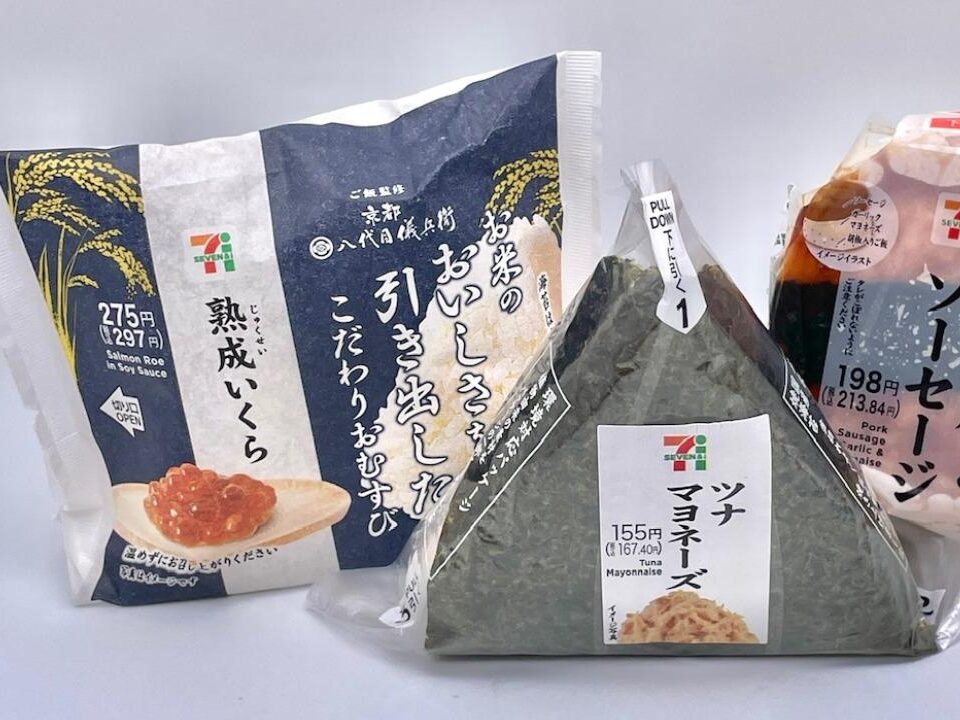
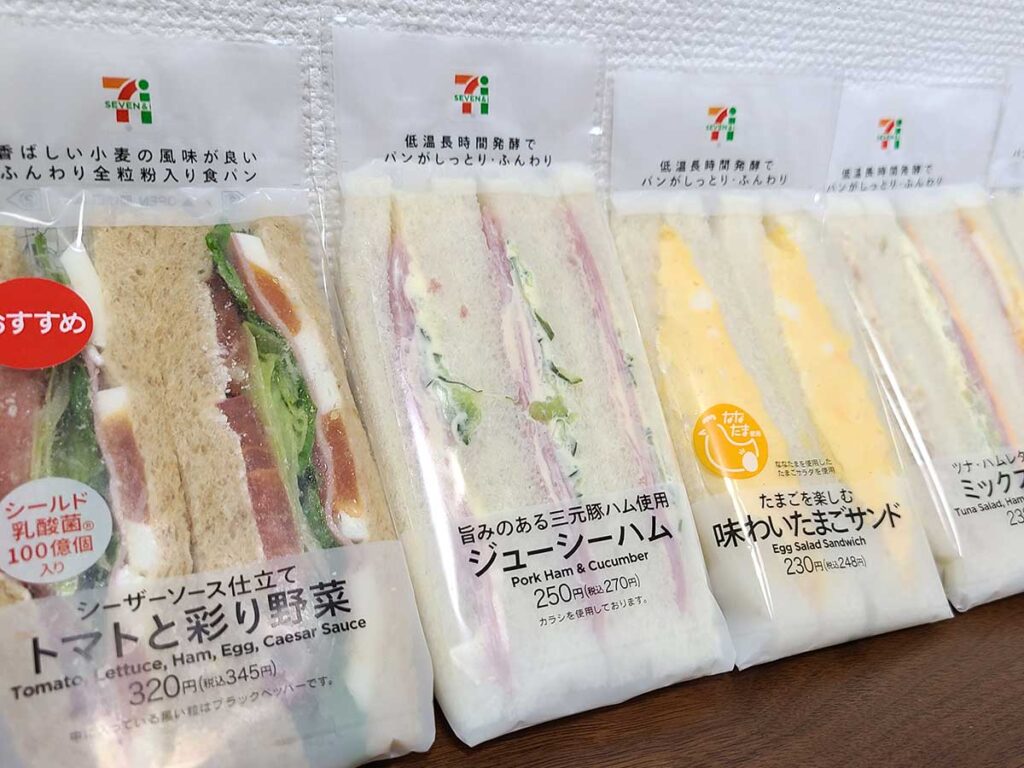


Food is freshly stocked daily, and many items can be heated in-store. It’s a great option for a budget-friendly meal on the go or a late-night snack.
Great for picky eaters or travelers on the go!
🍵 Drinks and Dining Etiquette
Japanese dining culture is rooted in respect—for the food, the people who prepare it, and those you’re eating with. While most restaurants won’t expect you to know every detail, understanding a few basic customs will help you feel more comfortable and show appreciation for the culture. Here are some easy tips to keep in mind when eating out in Japan.
- Water or tea is usually served for free
Most restaurants in Japan will automatically bring you cold water or hot tea at no extra charge, and refills are also free. - Iced green tea and barley tea (mugicha) are common non-alcoholic options
These teas have a light, refreshing flavor and are often served with meals instead of soft drinks—especially in summer. - Slurping noodles is okay—it shows appreciation
In Japan, slurping is not considered rude. It’s believed to enhance the flavor and express enjoyment, especially when eating ramen or soba. - Avoid sticking chopsticks upright in rice or passing food between chopsticks
Both actions resemble Japanese funeral rituals and are considered bad manners. Instead, place chopsticks neatly on the holder or dish edge. - Say “itadakimasu” before eating and “gochisousama” when finished
These phrases show gratitude to those who prepared the meal. They’re polite customs and widely appreciated when used, even by foreigners.
😊 Final Tips for a Delicious Experience
- Don’t worry if you can’t read everything—pictures and plastic models help
- Department store basements (depachika) offer gourmet takeout
- Many restaurants are casual and welcoming, even if you’re alone
Exploring food is one of the best parts of visiting Japan. With a little preparation, even picky or cautious eaters can discover something delicious. Let’s enjoy Japan’s food culture together!

